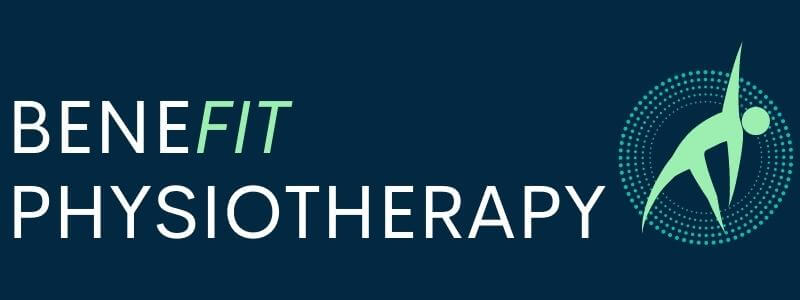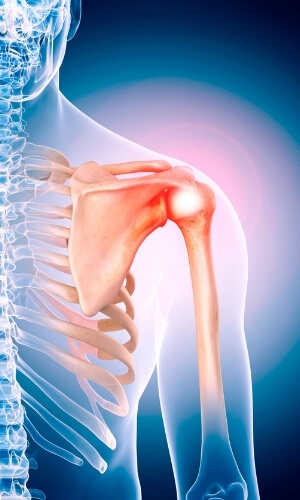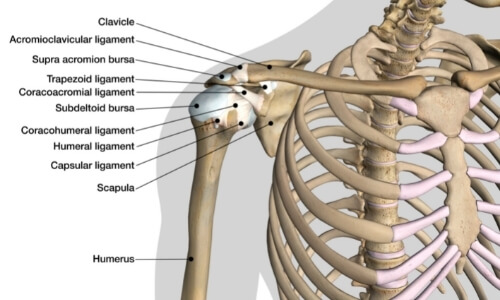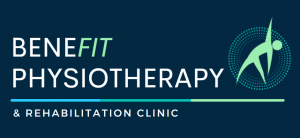What is the bursa?
A bursa is a small, fluid filled sac which reduces friction between tendons/muscles and the bone that they glide along. It acts as a cushioning to protect the surrounding soft-tissues.
Think of it like rubbing a leather belt over the corner of a table for an extended period of time – eventually the leather belt is going to wear down. But if we put a pillow between the two surfaces the belt is protected from damage.
In the same way our bursa (the pillow) protects our tendons/muscles (the belt) from wearing down against the bone.
The human body has more than 140 bursae situated in various locations. Specifically in the shoulder, the subacromial bursa is one of the most common causes of shoulder pain and often leads to significant and persistent pain.
In this article we will explore the anatomy, pathology and common causes which cause subacromial bursitis.
Subacromial Bursitis – Anatomy
The shoulder is a complex joint. It’s primarily a ball and socket joint but the socket itself is quite shallow. This is advantageous because it allows the shoulder to move in multiple directions and with little restriction.
The down side is that it requires incredible control from the surrounding muscles – in particular the rotator cuff muscles. If the rotator cuff muscles are not strong enough the ball begins to slip out of the socket.
In addition to the complex ball and socket joint we also have the interaction with the shoulder blade. Successful shoulder movement is dependent on the delicate balance between strength in the rotator cuff and strength in the shoulder blade.
The inability to balance these aspects of the shoulder and coordinate the muscles controlling these parts is a common cause of shoulder injury.
Now how does this relate to the bursa? As mentioned above, the bursa prevents friction between a tendon/muscle and the bone. In the shoulder, the subacromial bursa prevents the rubbing between the supraspinatus tendon (one of the rotator cuffs) and the acromion bone on top.
This puts it in a unique position where the bursa is vulnerable to compressive forces from both the acromion above and the ball and socket joint below. This sandwiching between the bones causes inflammation of the bursa which causes significant pain in the shoulder and down the arm.
Signs and symptoms of subacromial bursitis
Don’t let the pain confuse you. When you have a subacromial bursitis it’s very rare to actually feel your symptoms on the bursa itself. Instead you will feel referred pain on the outer portion of the shoulder and possibly down the arm. In severe cases you will be unable to lift the arm due to the severity of pain.
Because the bursa is positioned very close to other structures in the shoulder, it’s often difficult to determine which structure is causing the pain. You should have your physiotherapist assess the shoulder to determine the cause of your pain and how you can best resolve it.
Should I get a scan?
A simple ultrasound can be performed to determine if you have a subacromial bursitis. However, this shouldn’t be your first step.
Sometimes the scan can be misleading.
Due to it being located on top of the supraspinatus and sandwiched between two bones in the shoulder, the bursa is vulnerable to secondary injury.
This is very common in conditions such as rotator cuff tears, rotator cuff tendinopathy, adhesive capsulitis/frozen shoulder and osteoarthritis.
It is common to see people trying to relieve their pain with quick fixes like cortisone injections and anti-inflammatory medication. Don’t get me wrong, these are very effective methods for treating a bursitis because they stop inflammation and allow the bursa to return to its natural state.
But if you don’t treat the underlying problem inevitably the bursitis will return.
Let’s look at a case study.
A young mother (let’s call her Jane) who was experiencing shoulder pain presented to the clinic. She noticed the pain got worse after performing overhead presses in the gym.
After putting up with the pain for 3 months and having trouble with daily tasks like putting tops on and lying on her shoulder, Jane decided to see her doctor who referred her for an x-ray and ultrasound.
The x-ray came back normal but the ultrasound showed some rotator cuff tendinopathy and a moderate subacromial bursitis. To treat the bursitis she was referred for a cortisone injection and one week rest which completely settled her pain.
Jane was happy – she had no pain with dressing, no pain lying on the shoulder and no problem in the gym. This was going well for about six weeks, but Jane was getting more and more frustrated when her pain started to return.
After a physical examination in the physio clinic it became obvious that although Jane’s pain was coming from the bursa, her problem was a weakness in the rotator cuff.
Because Jane had treated the bursa without strengthening the rotator cuff, as soon as shoulder had to carry weight the bursa was re-aggravated.
Some simple exercises prescribed by the physiotherapist has provided long-term relief and no further injection was required. Not only did Jane reduce her pain but she was also able to lift heavier weights in the gym.
Identifying these small deficiencies in the shoulder can help both injury rehabilitation and performance.
The frustrating part of this case study is that Jane’s experience is extremely common. People will naturally turn to a quick-fix for pain relief without identifying the underlying problems in the shoulder.
Use of cortisone injections and anti-inflammatory medication has its place but shouldn’t be used as a replacement for exercise therapy.
The final word
In some circumstances a subacromial bursitis is a standalone injury which will resolve with rest, anti-inflammatory medication or cortisone injection.
But far too often patients will use these methods to treat the pain and fail to address the underlying cause of the bursitis.
An assessment from your physiotherapist can help identify the true problem and implement an effective rehabilitation plan to provide long-term benefit.
One-on-One Physiotherapy Care - Complete Attention - You Deserve It !
Contact Us today to find out how we can help you.






